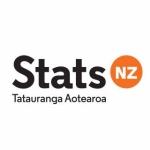A fresh look at patterns in gadget sales
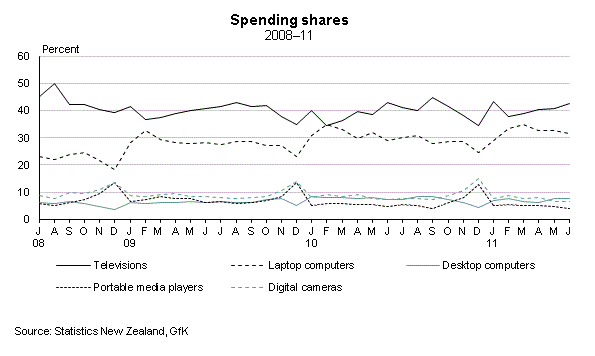
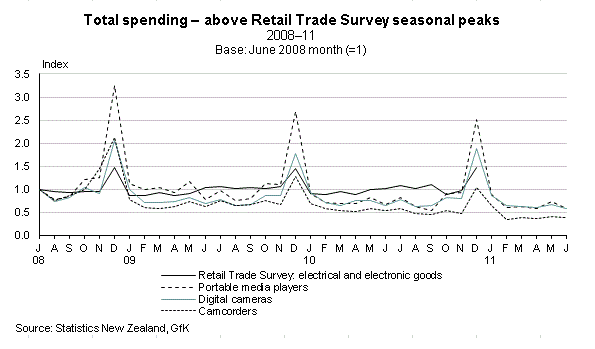
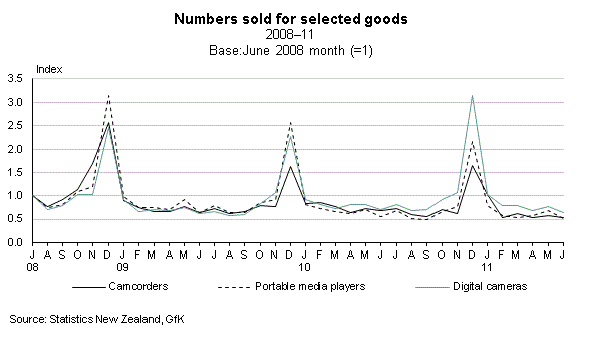
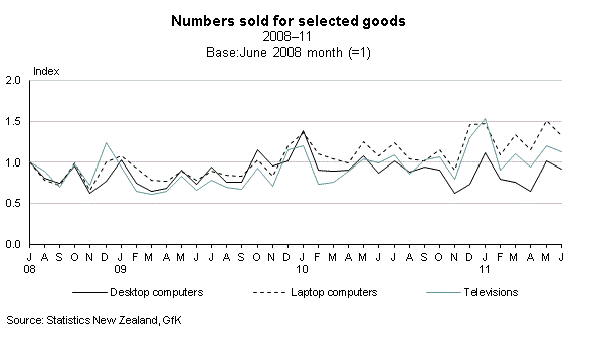
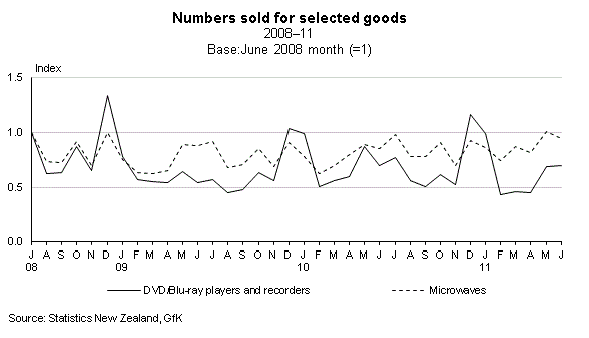
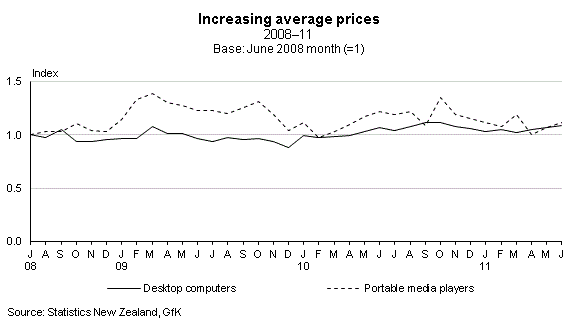
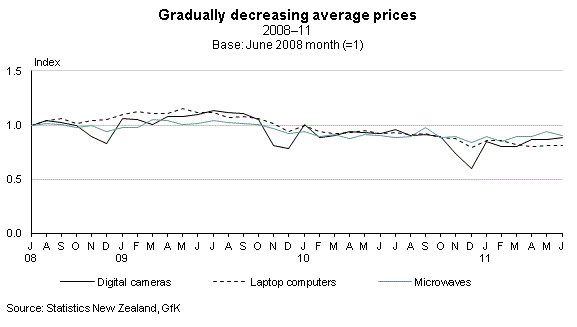
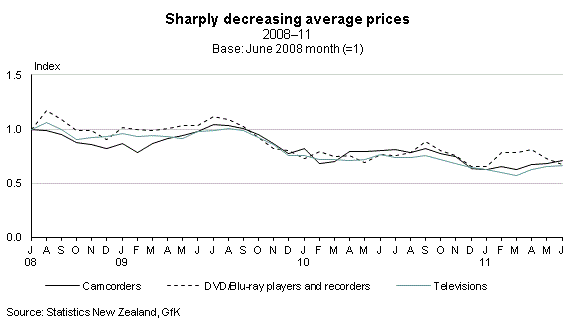
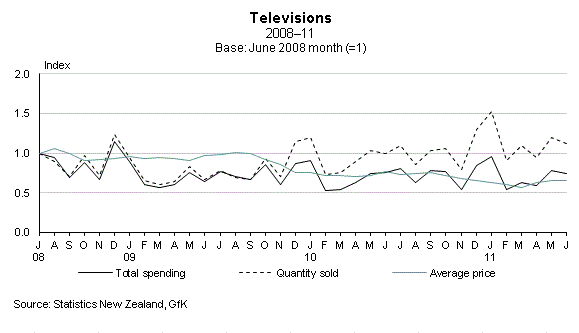
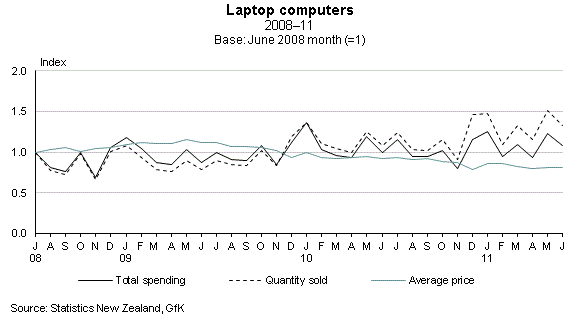
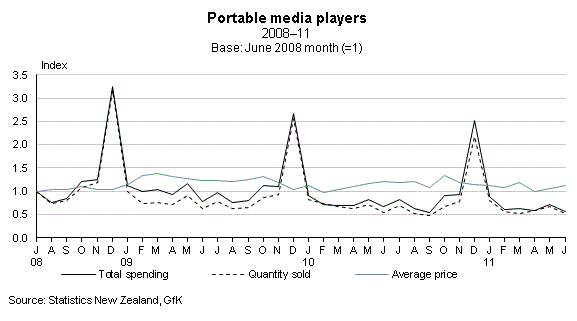
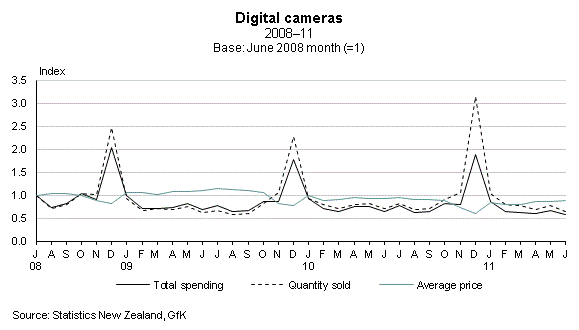
Statistics New Zealand's Prices team has been analysing retail transaction data on consumer electronic goods, provided by the market research company GfK. This data has high coverage of all retail sales of consumer electronics in New Zealand and includes detailed information on the characteristics of products sold. Our analysis has shown interesting patterns in the data, and these are the focus of this article.
We have examined the values, quantities, and characteristics for most retail sales of eight consumer electronic goods sold in New Zealand over the three years from mid-2008 to mid-2011. We looked at sales of camcorders, desktop computers, digital cameras, DVD/Blu-ray players and recorders, laptop computers, microwaves, televisions, and portable media players (such as iPods).
Based on information from the 2009/10 Household Economic Survey, these eight goods together contribute about one-third of sales to households by stores in the 'electrical and electronic goods' retail industry, and about one-tenth of department store sales to households. Looking at the distribution of sales from a different angle, approximately half of the combined sales on the eight goods occur within the 'electrical and electronic goods' industry, and another third are sold through department stores.
Spending shares show seasonal patterns
Figure 1 shows the relative amounts that consumers spend on these eight goods. Televisions and laptop computers are by far the most significant in terms of sales value. Averaged over the three-year period, the highest spending shares were on televisions (about 40 percent) and laptop computers (28 percent).
There were strong seasonal patterns in spending on electronic goods, with significant increases in relative spending on both digital cameras and portable media players in the Christmas period. During the Christmas period, there were corresponding dips in relative spending on computers (both laptops and desktop computers) and, to a lesser extent, televisions.
(See Figure 1: Spending shares)
Total spending rises in December
Analysing the total amount spent on each type of good gives us more insight into the sales of different goods. Figure 2 shows the patterns of total spending on each good, compared with total retail sales in the electrical and electronic goods retail industry. These have been scaled to more clearly show seasonal patterns across the three years. Total spending on each good includes goods and services tax (GST). Total retail sales for the electrical and electronic goods retail industry, from the Retail Trade Survey, are exclusive of GST. Monthly Retail Trade Survey data is not available after December 2010.
Figure 2 reveals that the drop in the shares of spending on computers and televisions in December is a result of relatively higher increases in Christmas sales of portable media players and digital cameras, rather than a drop in spending on computers and televisions. For nearly all the goods, spending peaks in the Christmas period. The exceptions to this are computers, both desktops and laptops, where spending peaks in January. For 2010 and 2011, spending on televisions peaked after Christmas.
(See Figure 2-2b: Total spending - above Retail Trade Survey seasonal peaks)
Numbers sold at Christmas triple for some goods
Figure 3 shows the number of each good being sold, scaled to more clearly show seasonal patterns. This shows that the number of digital cameras sold in the 2010 Christmas period was higher than the numbers sold in both the 2009 and 2008 Christmas periods. In contrast, the numbers of portable media players and camcorders sold in the 2009 and 2010 Christmas periods were lower than the numbers sold in the 2008 Christmas period.
The numbers of laptops and televisions being sold has grown, while the numbers of digital cameras, DVD/Blu-ray players and recorders, portable media players, and camcorders have been declining.
(See Figure 3-3b: Numbers sold for selected goods)
Average prices fall for most goods
Figures 2 and 3 differ from each other because the average price of each good changes over time. These changes in average prices are shown in figure 4.
Figure 4 shows the trend in average price for each of the goods. These average prices are not adjusted for the change over time in quality of the goods being sold. Price indexes adjust for the change in quality. Statistics NZ’s Prices team is currently researching methods for estimating quality-adjusted price indexes from this data, which will incorporate the detailed information available on the characteristics of the products.
The only two goods that increased in average price (not adjusted for quality) were desktop computers and portable media players. They were both approximately 10 percent higher in mid-2011 than they were in mid-2008.
In mid-2011, average prices of DVD/Blu-ray players and recorders, camcorders, and televisions were all about 30 percent lower than in mid-2008. The average laptop sold was about 20 percent cheaper and average prices for digital cameras and microwaves fell by about 10 percent.
These average prices reflect both 'pure' price change, and the change in quality of the average product being sold. For example, as the average television being sold over time is increasing in quality (for example, increasing screen sizes, higher picture resolution, and Internet connectivity), the 'pure' price falls are even greater than shown here. Quality-adjusted prices of televisions, as tracked for the CPI, decreased 61 percent between the September 2008 quarter and the September 2011 quarter.
Interestingly, the average price of digital cameras drops each December. Our analysis has found that there is a change in the mix of digital cameras purchased (towards lower-priced models) during this month.
(See Figure 4-4b: Average prices)
Analysis of individual goods shows contrasting changes
The next four graphs contrast the spending, quantities, and average prices of selected electronic goods. Figures 5 and 6 examine televisions and laptop computers, which had the highest shares of spending. Figures 7 and 8 look at portable media players and digital cameras, which have the largest jumps in sales in the Christmas periods of the three years examined.
Televisions
Figure 5 shows a large number of post-Christmas sales of televisions in January 2010 and January 2011. From mid-2008 to mid-2011, the number of televisions sold rose, while spending on televisions was largely unchanged from 2009. The fall in the amount spent on televisions reflects a drop in the average price (not adjusted for quality change) of televisions over the period we analysed.
(See Figure 5: Televisions)
Laptop computers
Figure 6 shows that sales of laptop computers peaked after Christmas from mid-2008 to mid-2011. Both spending and the number of laptops bought have increased, while average prices have decreased since mid-2009. Laptops’ share of total spending on the eight goods has increased over time, from approximately 23 percent in mid-2008 to 32 percent in mid-2011.
(See Figure 6: Laptop computers)
Portable media players
Figure 7 shows that there was a gradual decline in spending on portable media players from mid-2008 to mid-2011. The jump in spending on portable media players and the number of units sold during the Christmas period has declined in line with this trend. The average price of portable media players, not adjusted for any change in the average quality, is not showing any obvious long-term trend over the three years examined.
(See Figure 7: Portable media players)
Digital cameras
Our analysis showed that the highest numbers of digital cameras were sold in December, but that the average price dropped. Looking at the mix of cameras sold in December, the numbers of the lower-priced camera models sold increased roughly four- fold compared with the rest of the year, whereas the numbers of higher-priced camera models sold doubled. This suggests more lower-priced camera models were purchased as gifts during December. The highest spike in the number of cameras sold was in the 2010 Christmas period. The average price was also lowest for this period. From mid-2009 to mid-2011, the trend in spending was largely unchanged.
(See Figure 8: Digital cameras)
Conclusion
As the graphs above show, the amount that consumers spend on individual consumer electronics and the number of units they buy varies during the year. Analysis of spending, spending shares, average price, and numbers of goods purchased provides insights into the changing behaviours of consumers over time that are not readily observable from sales data at a retail industry level.
We are currently investigating the possible use of the retail transaction data supplied by GfK to construct more efficient measures of quality-adjusted price change for consumer electronics, which, if feasible, would be used in the consumers price index.
For more information about how prices of electronic goods have changed, see the Retail Trade Survey and the
Consumers price index.
